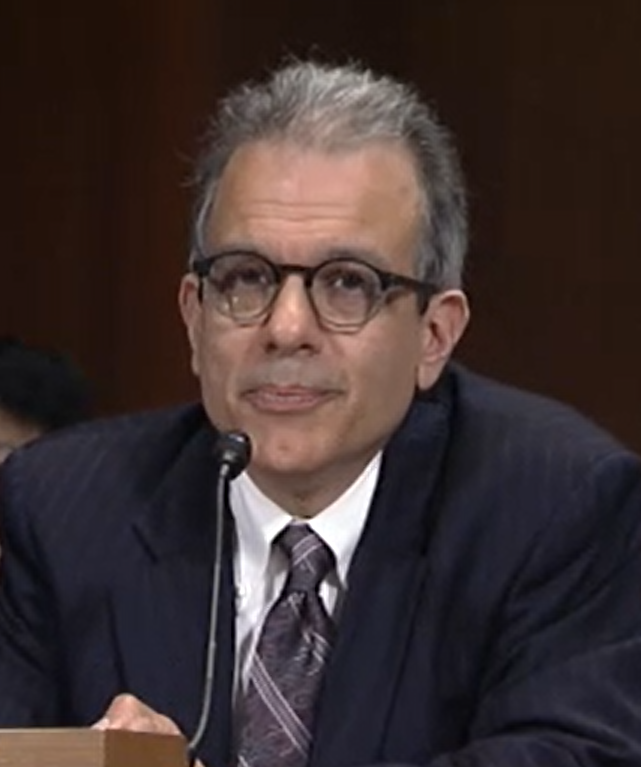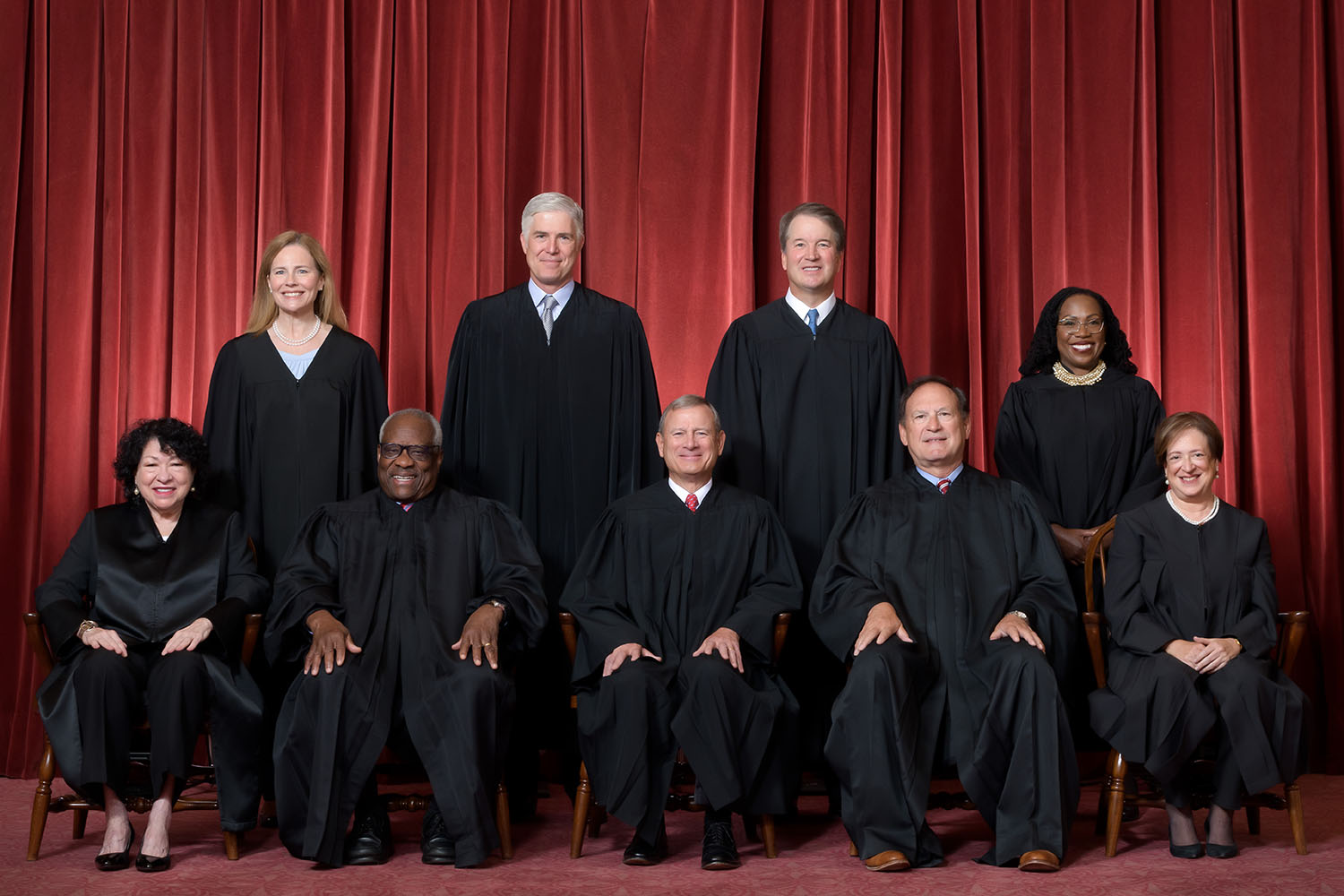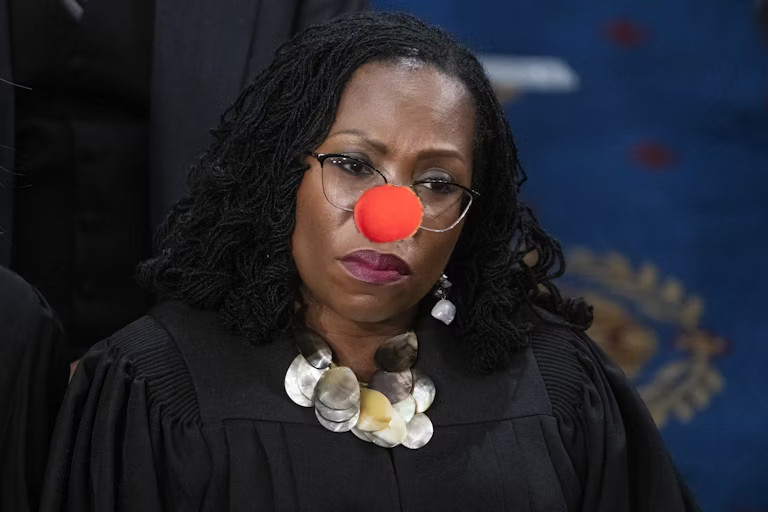This opinion is 103 pages long with the court’s opinion, delivered by Chief Justice Roberts joined by Alito, Sotomayor, Kagan, Gorsuch, Kavanaugh, Barrett, and Jackson. Sotomayor wrote a concurring opinion, Kagan joined in that concurrence. Gorsuch wrote a concurrence. Kavanaugh wrote a concurrence. Barrett wrote a concurrence. Jackson blathered some words, pretending to agree.
And Justice Clearance Thomas stood up and said, “You got it wrong.”
After
New York State Rifle & Pistol Assn., Inc. v. Bruen, 597 U.S. 1 (2022), this Court’s directive was clear: A firearm regulation that falls within the Second Amendment’s plain text is unconstitutional unless it is consistent with the Nation’s historical tradition of firearm regulation.
Not a single historical regulation justifies the statute at issue, 18 U.S.C. §922(g)(8). Therefore, I respectfully dissent.
—
LaMarco v. Suffolk County, No. 2:22-cv-04629, slip op. at 6 (E.D.N.Y.)This is where I stand as well. The state failed to meet its burden to show that §922(g)(8) is consistent with this Nation’s historical tradition of firearms regulation. What seems to have happened is that they were looking hard for something that would allow them to ignore the precedents of Heller and Bruen
Just as important as §922(g)(8)’s express terms is what it leaves unsaid. Section 922(g)(8) does not require a finding that a person has ever committed a crime of domestic violence. It is not triggered by a criminal conviction or a person’s criminal history, unlike other §922(g) subsections. See §§922(g)(1), (9). And, §922(g)(8) does not distinguish contested orders from joint orders—for example, when parties voluntarily enter a no-contact agreement or when both parties seek a restraining order.
Missing citations for UETRMP2L
I haven’t really seen a historical firearm regulation that actually allows for the disarmament of a person. I’m not sure that Justice Thomas would agree.
This case isn’t about a criminal being disarmed. This case is about a man in the middle of divorce proceedings where he was slapped with a TRO. We don’t even know if he had affective counsel. We don’t know if he was in attendance during the hearing.
All we know is that the court believes he received actual notice and that he was allowed to participate. Not that he actually received notice or that he participated.
Short story, when I was divorcing my first wife, it was not a good thing. She was looking for ways of messing with me. I arrived to pick up my kids for the Memorial Day weekend. My kids and I had made plans. She refused to answer the door.
In the end, she came downstairs and we spoke. I backed away from her. Kept my hands in my pockets. Left without my children.
I called my Lawyer, reported the entire incident. Told my lawyer to be on the lookout for a simple assault charge. My lawyer called the ex’s lawyer to make sure he knew that we were ready for that charge if it was filed.
The ex’s lawyer swore up and down that there were no charges, no complaint filed.
About a month later, the cops showed up in mass to arrest me. Failure to appear.
My lovely estranged wife had managed to fill out the complaint so badly that they sent the summons to the wrong county. I never received it.
The court didn’t care. They had put it in the mail, it was my responsibility to know that they had.
If my Ex had been looking for a TRO when they held that hearing, I would have “failed to appear” but I would have been “given notice” and “had an opportunity to appear”.
In addition, §922(g)(8) requires that the TRO restrain the accused from engaging in threatening behavior. Here’s the thing, being told “don’t threaten your wife” does not mean that you have ever threatened your wife. The defense and many of the Amici pointed out that the “don’t threaten” language is often just boilerplate stuff.
This is much different from being found guilty, beyond a reasonable doubt, in a court of law, by a jury of your peers.
The Second Amendment provides that “[a] well regulated Militia, being necessary to the security of a free State, the right of the people to keep and bear Arms, shall not be infringed.” As the Court recognizes, Bruen provides the framework for analyzing whether a regulation such as §922(g)(8) violates the Second Amendment’s mandate. “[W]hen the Second Amendment’s plain text covers an individual’s conduct, the Constitution presumptively protects that conduct.” 597 U.S., at 17. To overcome this presumption, “the government must demonstrate that the regulation is consistent with the Nation’s historical tradition of firearm regulation.” Ibid. The presumption against restrictions on keeping and bearing firearms is a central feature of the Second Amendment. That Amendment does not merely narrow the Government’s regulatory power. It is a barrier, placing the right to keep and bear arms off limits to the Government.
Missing citations for UETRMP2L
Damn, just damn.
So this is where we start to see how come Justice Thomas is so good for us. One of the arguments that the state makes, over and over again, is that this particular infringement addresses a new societal problem or advancement in technology, and therefore, the court should use a “more nuanced approach” in matching historical regulations.
The Court employed this “straightforward” analysis in Heller and Bruen. Heller considered the District of Columbia’s “flat ban on the possession of handguns in the home,” Bruen, 597 U. S., at 27, and Bruen considered New York’s effective ban on carrying a firearm in public, see id., at 11–13. The Court determined that the District of Columbia and New York had “addressed a perceived societal problem—firearm violence in densely populated communities—and [they] employed a regulation … that the Founders themselves could have adopted to confront that problem.” Id., at 27. Accordingly, the Court “consider[ed] ‘founding-era historical precedent’” and looked for a comparable regulation. Ibid. (quoting Heller, 554 U. S., at 631). In both cases, the Court found no such law and held the modern regulations unconstitutional. Id., at 631; Bruen, 597 U. S., at 27.
Missing citations for UETRMP2L
This paragraph guts all those state arguments. Any weapons ban is “straightforward” under Bruen and Heller
Section 922(g)(8) violates the Second Amendment. First, it targets conduct at the core of the Second Amendment—possessing firearms. Second, the Government failed to produce any evidence that §922(g)(8) is consistent with the Nation’s historical tradition of firearm regulation. To the contrary, the founding generation addressed the same societal problem as §922(g)(8) through the “materially different means” of surety laws. Id., at 26.
Missing citations for UETRMP2L
The state has been arguing that surety laws allow them to ban classes of firearms, or make an area a sensitive location. It is not clear from the record that surety laws were used as much as just existing.
In this case, Thomas matches the surety laws to the regulation in question. Is that person violent? Have him put up a sum of money which will be forfeit if he does violence. This is a good match.
There is much more to get from this dissent. I’m sure there will be more soon.



